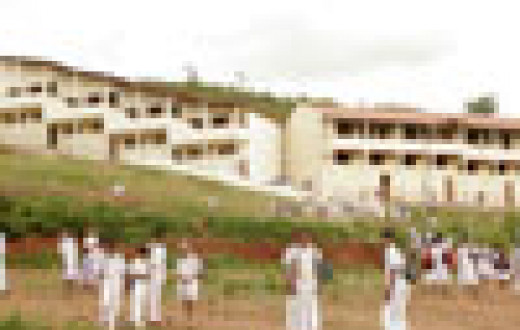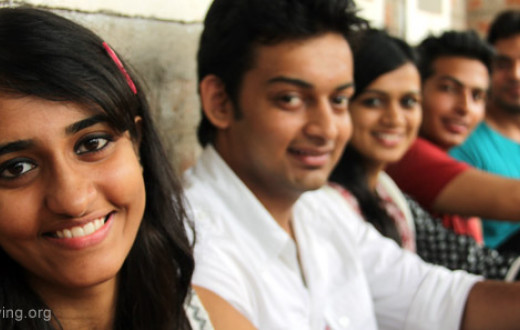Overview
It’s 5 a.m.in Amjhor, a village situated in the heart of a Naxal belt in Jharkhand. A little girl and her brother wake up looking forward to another day. They brush their teeth and go for a bath the whole time humming a ‘bhajan’ they learned in school. Carefully oiling their hair, the mother is happy to send them off to school. Dressed in white uniforms with good shoes that will last them the whole year, the brother and sister leave for school. It’s a five-kilometer walk through the village and the jungle, which they take every day.
The school, ‘Sri Sri Gyan Mandir’ is an open space in the interiors of Patamda in a tribal village called Jajradih. The school has three classrooms. One is a long tin shed under which the little kids (1st to 5th) sit and study, and the other two are two big tamarind trees, under whose cool shade the big kids (6th and 7th) sit and study. The kids assemble in the middle of the space and say their morning prayers - Itni shakti humein de oh daata, mann ka vishwas kamzor ho na (God, give us strength so that our faith doesn’t falter). Like the duo of the little brother and sister, many such kids walk down to this school from neighboring villages every morning.
The Gift a Smile is our innovative school and service program that has made it possible to bring contrast to the lives of these children. The program primarily aims to bring modern and holistic education to children from the marginalized sections of the society.
What change did we bring?
Shilpa, a student since Standard VII says, “For the first time, I feel that women are not beneath men – that we are equals and can do things equally well and even better.”
Bali Kiksu says, “My elder sister is a shepherd. I would have also done the same thing. However, The Art of Living volunteers approached my father and persuaded him to send me to the school at Chakdah.”
The presence of the school and its activities have played a very important role in the strengthening of these communities as a whole. Today, there’s a marked difference in these areas and the mindset of the students and their parents.
Our education initiatives are driven by a committed team of volunteers who draw their inspiration and energy from a powerful breathing technique, the Sudarshan Kriya. Learn the tool from the comfort of your home.
How does the journey look so far?
- Over 70,000 students study in 702+ free schools across 22 states.
- 95% attendance rate – much higher than the national average
- 90% of our students finish school as against a national average of 37%
- 100% of our students cleared Class X exams
- Sex ratio of 48 girls to 52 boys which is significantly better than the national average
How did we work?
Our schools nurture the complete child, including the body, mind, and spirit. Family values are strengthened, and social barriers are replaced by progressive attitudes. The aim is to provide holistic, value-based education, thus shaping an empowered and responsible personality. Some of the highlights of these schools include:
- The schools offer state syllabus (accredited by the State Govt.) thus allowing children to mainstream into the current educational context
- Most children are first generation learners, paving the way for future generations of educated families
- Sports and extra-curricular activities offered in the schools promote the all-around well-being of the child
- Yoga, Pranayama, and breathing techniques form a part of their daily routine
- Vocational and art classes provide older students with the practical and creative skills required to make a living and to help make their personal lives fuller
- Encouraging community participation through various activities like health check-up camps, tree plantation drives, adult education, etc.
“Every day is a challenge and a miracle. They love to come to school now, and sometimes we have to force them to go back home!” shares Shubhangi Karvir, the principal of one of the schools.
How can you contribute?
It is our continuous endeavor to bring such transformation to newer areas. You can join hands with us to build infrastructure or to support operational costs of these schools.







